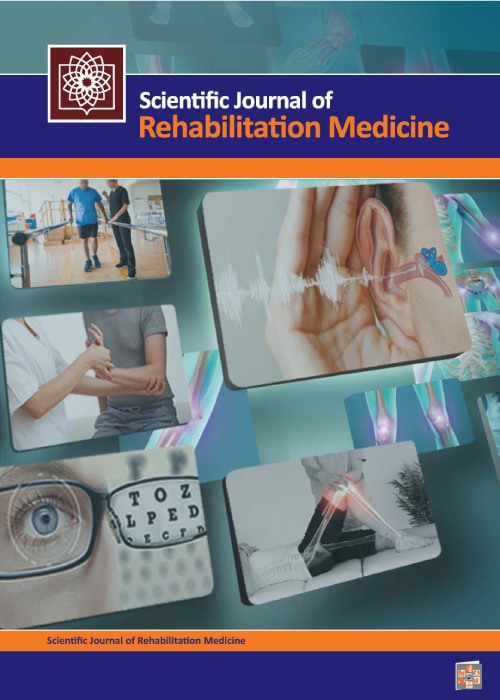Identification of the Shoulder Muscle’s Rhythm in Slow and Fast Handball Throwing in Individuals with and without Shoulder Impingement
Author(s):
Article Type:
Research/Original Article (دارای رتبه معتبر)
Abstract:
Background and Aims
The previous studies have reported controversial results on the shoulder muscles’ activity of individuals with shoulder impingement. The aim of the present study was to quantify the shoulder muscles’ activity during the cocking and acceleration phases of handball throwing with slow and fast speeds.
Materials and Methods
A total of 12 controls (age: 23±3; weight: 64±12) and 12 patients with shoulder impingement (age: 27±4; weight: 60±13) were studied. The electrical activity of shoulder muscles in the right sides, including upper trapezius, anterior, middle, posterior deltoid, latissimus dorsi, pectoralis major, supraspinatus, and triceps muscles, were measured in both shoulders using an EMG system with surface electrodes. A mixed 2×2 analysis of variance was used at a significant level of p < 0.05.
Results
In cocking phase of the slow and fast throwing, in patients, higher activities of upper trapezius, supraspinatus, and latissimus dorsi muscles were observed, as compared with control group and in cocking phase of fast throwing, middle deltoid activity was lower in patient group (p<0.02). In the acceleration phase of the slow throwing, the activity of upper trapezius muscle was higher in patients compared with control group. However, in the acceleration phase of the fast throwing, in patients, lower activity in middle deltoid and higher activities in latissimus dorsi and trapezius muscles were observed (p<0.05).
Conclusion
Shoulder pain syndrome results in altered shoulder muscle activity. These alterations are greater in fast throwing activity. The current study does not determine whether these changes are because of adaptation to the pain, or are caused by the injury. However, it appears that with pain present, fast throwing movements will put the shoulder in greater risk of injury. It is suggested that isometric or slow movements be used in the shoulder rehabilitation at the early stage of the treatment. Correct muscle enhancement is also recommended to prevent the shoulder pain syndrome.Keywords:
Language:
Persian
Published:
Scientific Journal of Rehabilitation Medicine, Volume:7 Issue: 3, 2018
Pages:
69 to 78
magiran.com/p1883382
دانلود و مطالعه متن این مقاله با یکی از روشهای زیر امکان پذیر است:
اشتراک شخصی
با عضویت و پرداخت آنلاین حق اشتراک یکساله به مبلغ 1,390,000ريال میتوانید 70 عنوان مطلب دانلود کنید!
اشتراک سازمانی
به کتابخانه دانشگاه یا محل کار خود پیشنهاد کنید تا اشتراک سازمانی این پایگاه را برای دسترسی نامحدود همه کاربران به متن مطالب تهیه نمایند!
توجه!
- حق عضویت دریافتی صرف حمایت از نشریات عضو و نگهداری، تکمیل و توسعه مگیران میشود.
- پرداخت حق اشتراک و دانلود مقالات اجازه بازنشر آن در سایر رسانههای چاپی و دیجیتال را به کاربر نمیدهد.
In order to view content subscription is required
Personal subscription
Subscribe magiran.com for 70 € euros via PayPal and download 70 articles during a year.
Organization subscription
Please contact us to subscribe your university or library for unlimited access!


